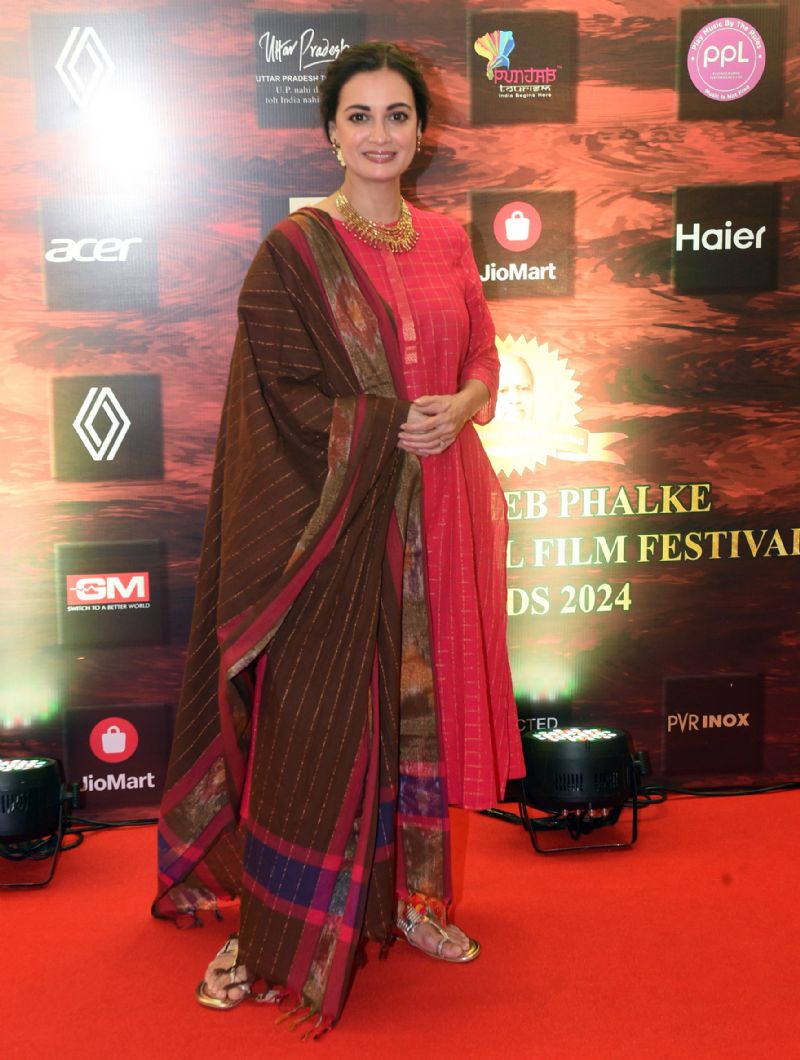|
New Delhi, Jan 10 (IANS) The excellence of the arts of Kashmir is generously reflected in the decorative and ornamental elements found in the architecture of its mosques and shrines, where attention is focused on the delicate details, innovative patterns and motifs that combine to create a unique style. With the motifs a blend of geometric and floral forms sensitively used to create a sense of unity of nature and creativity, they have for centuries addressed the spiritual and devotional urge and longing of worshipers and visitors.
The sacred and the secular typologies also have a deep imprint of cross-cultural influences in both form and style.
"In harmony with the vernacular style of construction using wood, the historic shrines and mosques of Kashmir bear characteristics of building in stone from early Hindu and Buddhist times, combining with the advent of Islamic traditions in the 14th century," says author-photographer-researcher Qamoos Bukhari, who has collaborated with the INTACH Kashmir Chapter for "Architectural Ornamentation in Shrines & Mosques of Kashmir" (Roli Books) that brings alive an enduring legacy of the past.
The book came about after he met the Chapter's convenor, M. Saleem Beg, at a calligraphy exhibition at Srinagar's Jamia Masjid.
"There we interacted for the first time and exchanged our thoughts about the heritage and crafts of Kashmir. For taking our conversation forward, he invited me over to his office one day. In 2016, I had published a book on Kashmiri artisans, 'Borderless: The Artisans of Kashmir'. He showed his interest in seeing the book and asked me to bring my book along to his office," Bukhari, who studied English Literature at Delhi University's Hindu College, told IANS in an interview.
"At the office, he showed me the work they were doing and asked if I can do a somewhat similar visual-arts book for the Kashmir Chapter of INTACH. So after several successive meetings, I put across my concept, which he liked, and from then on, we began working towards realizing the project," he added.
Meticulous research has gone into the book.
"To start with, I had to go through the technical documentation of some shrine and mosque buildings done by INTACH in 2011. Taking reference from that, I had to plan and design new surveys across the monument locations in Kashmir. That included visiting sites many times for identifying, photographing, and taking measurements for the drawings.
"Since the project focused on the decorative elements, therefore, for the book, the architects had to create a new set of drawings that did not exist in their earlier 2011 documentation. Also, to bring variety to the work, I commissioned an artist to create watercolour and pen and ink illustrations," Bukhari explained.
A significant amount of effort also went into archival research, both physical and virtual.
"To find the images of the shrines & mosques, sometimes for days, I had to sift through a large chunk of historical material about Kashmir, which at the end included nothing of the kind I was looking for. Having said that, apart from what I have used in the book, the archival material that I discovered at institutions, and of which I have acquired a copy for the INTACH Kashmir Chapter, will surely come in handy to someone in the future," Bukhari added.
The lavishly illustrated book is divided into two chapters: "Understanding Kashmir's Islamic Religious Architecture in Continuity and Change" and "Patterns of Culture -- Understanding Craft through Mathematics" -- each with a lengthy introductory essay.
The first chapter details nine mosques and shrines: Khanqah-i-Maula, Mir Masjid, Jamia Masjid, Madin Sahab, Aali Masjid, Makhdoom Sahab, Khanqah-i Naqshband, Thag Bab Sahab, and Pathar Masjid. The second chapter details another nine mosques and shrines: Khanqah-i-Masood, Akhund Mulla Shah Masjid, Dastgeer Sahab, Imambara Hassanabad, Kreeri Aastan, Dadsar Aastan, Aishmuqam, Srigufwara, and Janbaaz Sahab.
The obvious questions would be why are there no visual chapters on Hazratbal and Charar-i-Sharif.
"We haven't done visual chapters because there doesn't exist anything of the past. Both are new constructions with no or less resemblance with the early aesthetics of the buildings," Bukhari said.
In the essay on chapter 1, Hakim Sameer Hamdani, Design Director at INTACH's Kashmir Chapter, explains:
"Within the wide swath of land that has been associated with Islam, Kashmir occupies a marginal and somewhat remote image. Traditionally it has been seen as a provincial part of the wider Indian sub-continent, with its claim to fame based mostly on its geographical location- the abundance of bountiful water, snow clad mountains and a pleasant climate. Within the Indian context, the region is also renowned for its crafts of which the shawl making has been famed at the court of Asian as well as European kings. Yet, the architectural outpourings of the area linked with its Islamic traditions have for the most part remained unexplored.
"The traditions of Kashmir's Islamic religious architecture may be seen as the physical representation of a syncretic culture, which was based on assimilation and adaptation while also forging continuity with established building features and elements. The strength of these local traditions was strong enough to outlive the powerful image of the Imperial Mughal rule which in the 16th century brought a building style that was developed outside the confines of the valley.
Historically, the period of Kashmir's Muslim Sultans (1322-1548), spanning almost two centuries, forms the formative period of Kashmir's Islamic religious architecture. Though after the fall of the Kashmiri Sultanate to Mughals, these traditions no longer formed part of the building projects executed under royal supervision, yet local patronage and preference ensured their survival. In a strange twist of fate, the mosques built by the Mughals in their Imperial traditions remained for most part abandoned.
"The building traditions of the region were revived during the fall end of the 19th and early part of the 20th century, which witnessed a reawakening of the collective Muslim conscience. Most of the constructions that took part in this period were part of independent and localized projects funded by the community under the supervision of elite of the society. In some cases prominent traders financed the construction or repair work. Members of Kashmiri Diaspora in the Indian plains were also responsible for funding major religious buildings in Kashmir.
"The latter part of the 20th century saw not only the introduction of new building material and loss of traditional building knowledge but also the emergence of a new middle class spirit, which looked down upon anything old as being representative of an image that is in essence 'poor and backward'. Consequently a number of old buildings were demolished and new 'modern' structures constructed in their place, a majority of which lack any contextual connection with their surroundings as well as the required 'aesthetes'. What has emerged in the recent past is a popular image of what Islamic religious architecture showcasing the appeal of a more widely recognizable 'Islamic' building, an appeal which became more and more widespread with every passing decade.
"In this new image of Muslim religious architecture of Kashmir a sustained attempt has emerged at drawing cultural inspirations from what is seen as the traditional heartland of the Muslim world, areas of Arab and Iranian influence. This paper presents a chronological study of this architectural genre in Kashmir as well how it has been popularized in the community both through processes of continuity as well as change," Hamdani concludes.
In the second essay, Fozia S. Qazi, a mathematician whose current research on patterns in the arts of Kashmir uses the mathematics of symmetry analysis to understand cultural order and interactions in the region, explains:
"Throughout the history of material culture, human beings have displayed a preference for symmetries and visual regularities. This preference manifests itself in myriad mediums and decorated forms with the earliest use of symmetry evident in tools made some 1.4 million years ago. This use of symmetry (especially that of repeated geometric patterns) can be seen as a mode of communication that conveys cultural information and preferences.
"But the study of proportion, form and symmetry present in material culture, cannot provide a full understanding of cultural order unless one also understands the underlying mathematical principles involved in the creation of the symmetries present in the patterns. Mathematics provides a language to understand the pattern at its most fundamental level. So to study the language of patterns certain mathematical tools can be used, that rely on the mathematical classification of symmetry, to systematically describe the precise nature of the patterns.
"Although the mathematical classification of symmetries has been known for a while it is only recently that it has been used as a tool for cultural study. The presence or absence of certain symmetries in the material culture of a people or the frequency of their use has become an important tool in understanding cultural preferences or cross-cultural interaction," Qazi concludes.
(Vishnu Makhijani can be reached at vishnu.makhijani@ians.in
--IANS
vm/dpb
Copyright and Disclaimer: All news and images appearing in our news section, search engines and social media are provided by IANS. If you face any issues related to the content/images, please contact our news service provider directly. We are not liable/responsible for any content/images related to the news service provider.
|




.jpeg)

.jpeg)



